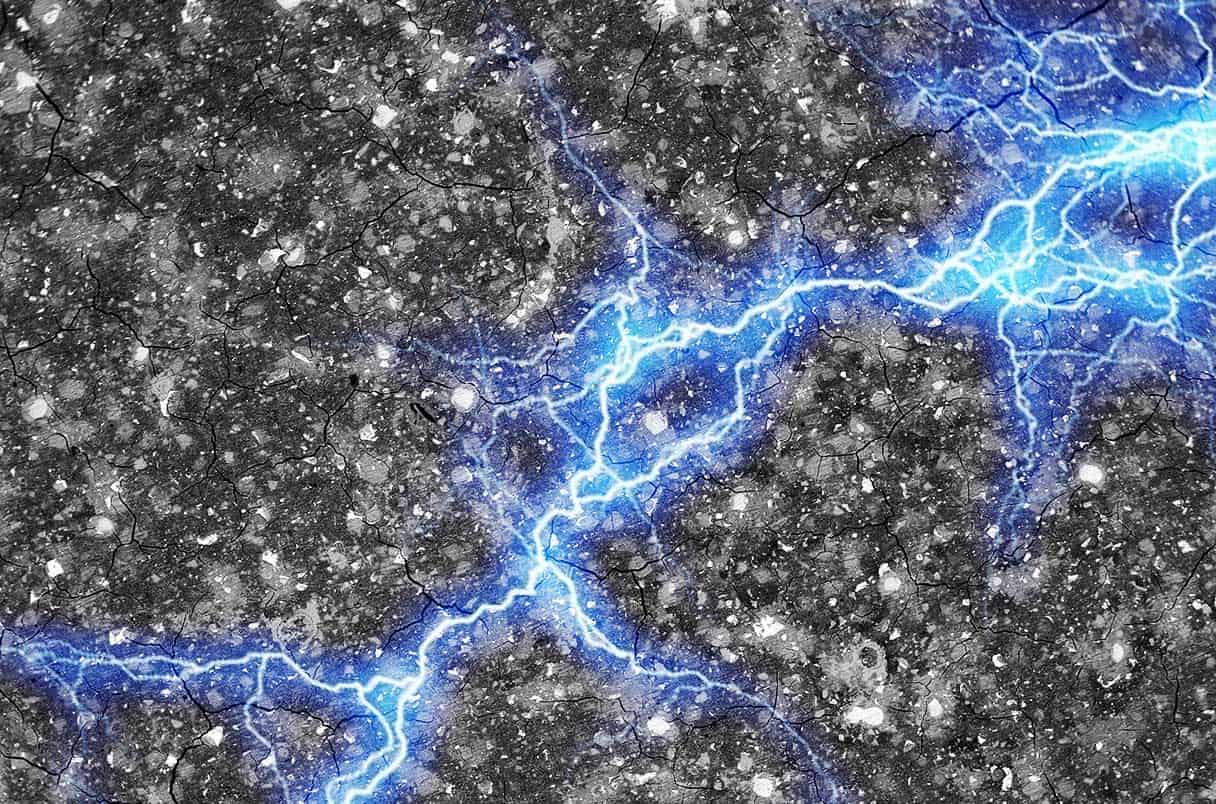Tesla’s Powerwall, a boxy, wall-mounted, lithium-ion battery, can power your home for half a day or so. But what if your home was the battery?
Researchers have come up with a new way to store electricity in cement, using cheap and abundant materials. If scaled up, the cement could hold enough energy in a home’s concrete foundation to fulfill its daily power needs. Scaled up further, electrified roadways could power electric cars as they drive. And if scientists can find a way to do this all cheaply the advance might offer a nearly limitless capacity for storing energy from intermittent renewable sources, such as solar and wind.
So far, the cement devices are small, only big enough to power a few LED lightbulbs. But efforts are already underway to scale them up. “It would be a very attractive technology if they can achieve that at a larger scale,” says Sang Nguyen, a mechanical engineer at Imperial College London who was not involved with the work.
The cement devices are a kind of simplified battery called supercapacitors. They consist of two electrically conductive plates separated by an ion-conducting electrolyte and a thin membrane. As the device is charged, positively charged ions from the electrolyte accumulate on one plate, while negatively charged ions accumulate on the other.
The amount of power storage depends on the total surface area of the supercapacitor’s conductive plates. For decades, researchers have tried to incorporate them into structural materials, such as the concrete used in roads and buildings, or the carbon composites used in automotive and aircraft bodies. Unlike today’s best batteries, supercapacitors typically use nonflammable electrolytes, making them safer.
The problem is that cement, a primary ingredient in concrete, is normally a poor electrical conductor. So, in recent years, several groups have made structural supercapacitors by spiking cement with highly conductive forms of carbon, such as graphene or carbon nanotubes. Although these perform well, the ingredients are expensive and hard to produce in the massive volumes used in the cement industry, notes Franz-Josef Ulm, a civil engineer at the Massachusetts Institute of Technology (MIT).
In search of a cheaper alternative, Ulm and his colleagues turned to an age-old form of powdered carbon known as carbon black, which has been used since antiquity as a black pigment. Cheap and globally abundant, carbon black is also highly conductive.
Ulm and his team mixed a small percent of carbon black with cement powder and added water. The water readily combines with the cement. But because the particles of carbon black repel water, they tend to clump together, forming long interconnected tendrils within the hardening cement that act like a network of wires.
Ulm and his colleagues cut this wired cement into small plates, creating supercapacitors 1 millimeter thick and 1 centimeter wide, about the size of a button. After adding a membrane, an electrolyte made from potassium chloride—a simple salt—and water, the researchers sealed the sandwich structure. When they then connected a wire to the plates and flipped a switch, cement supercapacitors lit up a series of LED lights.
If carbon black cement was used to make a 45-cubic-meter volume of concrete—roughly the amount used in the foundation of a standard home—it could store 10 kilowatt-hours of energy, enough to power an average household for a day, the team reports today in the Proceedings of the National Academy of Sciences. If the same approach were used to build roads, parking lots, or driveways, electrified concrete could store renewable power and deliver it to electric cars via inductive chargers. One approach might be sending electricity to the underbellies of cars via copper coils embedded in the roadway—a bit like how wireless chargers charge smartphones. Such technology is already being developed in Germany and the Netherlands.
By offering a cheaper alternative to more expensive batteries, electrified cement could also make storing renewable power more affordable for developing countries, says Admir Masic, a chemist at MIT and a co-author of a study. “This puts us into a new space for energy storage at prices accessible anywhere in the world.”
To succeed, researchers will need to scale up the button-size plates. Doing that isn’t trivial, Nguyen notes. As supercapacitors get larger their electrical conductivity typically declines, making it harder to inject and extract energy from them. One solution, Ulm notes, is to simply add more carbon black to the mix—but not so much that it weakens the structural integrity of the cement. For structural concrete, the researchers found they could add up to 10% carbon black without compromising too much of its strength. Ulm says the group has patented its technology and is now working to scale it up to match the output of a 12-volt car battery.

